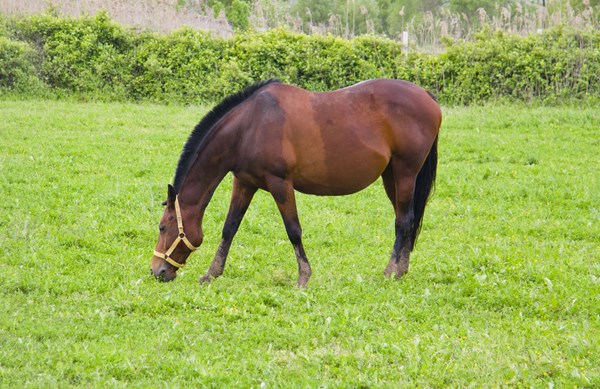 Credit: Thinkstock Study results strongly support the role of nutrition in designing a successful breeding program, not only in terms of the dietary components and the amount fed, but also when mares are fed.
Credit: Thinkstock Study results strongly support the role of nutrition in designing a successful breeding program, not only in terms of the dietary components and the amount fed, but also when mares are fed.Stress can do glorious things, like activate the flight or fight response, enabling you to outrun a cheetah or lift a car with your bare hands. On the flip side, stress can negatively affect homeostasis, the body’s natural “happy place,” and have deleterious effects on various body functions, including reproduction.
Common stresses for horses include:
- Transport
- Medication administration
- Cold and heat stresess
- Individual housing
- Phase of reproductive cycle
Relative to nutrition, horses can also be stressed by inappropriate types of feed or timing of meals. More specifically, if either their meal times or amount of forage is limited, some horses become stressed. Proof of nutrition-related stress is manifested in horses as the emergence of oral stereotypies, abnormal behaviors and gastric ulceration.
“It is well known that horses are ‘trickle feeders’ that would naturally consume a semicontinuous supply of forage for 40–70% of each 24-hour period. It is also known that horses can experience gastrointestinal discomfort if deprived food for a mere 1–2 hours,” explained Kathleen Crandell, PhD, an equine nutritionist at Kentucky Equine Research.
Modern equine management often dictates the need to stray from a horse’s natural dining preference, however.
“This is especially true in breeding facilities where mares are often housed individually with extra exposure to light to advance the breeding season,” added Crandell.
In such circumstances, mares might only be fed one or two meals daily—in sufficient quantities to meet their daily dietary requirements—rather than having access to forage most of the day as they would while on pasture. Previous research* clearly demonstrated that such temporal feeding patterns may be deleterious to reproductive efficiency in mares.
Specifically, that study found that broodmares fed roughage day and night had significantly fewer estrus cycle abnormalities and significantly higher conception rates compared to broodmares offered roughage only at night. It is important to note that both groups of mares were offered the same amount of roughage in a 24-hour period.
These results strongly support the role of nutrition in designing a successful breeding program, not only in terms of the dietary components and the amount fed, but also when mares are fed.
“In addition, removing sources of stress is an important component of welfare maximization for all horses, especially at larger breeding facilities,” Crandell concluded.
*Benhajali, H., M. Ezzaouia, C. Lunel, et al. 2013. Temporal feeding pattern may influence reproduction efficiency, the example of breeding mares. PLoS One 8(9):e73858.
Article courtesy of Kentucky Equine Research. Visit equinews.com/newsletters to subscribe to The Weekly Feed, KER’s award-winning equine nutrition newsletter.


